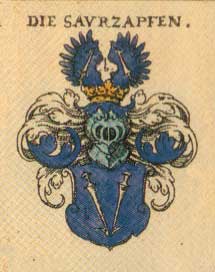|
There are many types of castles. Most familiar are the fortress ones with turrets and tall walls. Others were large residences.
Some were carved from huge caves. Most of the Sauerzapf castles were factory castles, which consisted of a residence and foundry
buildings.
Below is the castle in Sulzbach Bavaria. Pankratius Sauerzapf came from here to save the prehistoric city and
ancient Roman capitol of Trier, Germany and its relics and ruins from being totally destroyed in the 16th cenury.
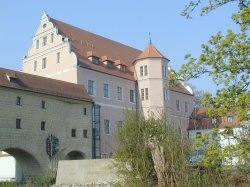
Below is the cave castle, Hoelenberg Loch. It is a cave converted into a castle. It was owned by the Sauerzapfs from
the 15th century to the 18th when it was donated to a religious order. The first picture shows the tower:

This shows some of the ruined walls in a garden:
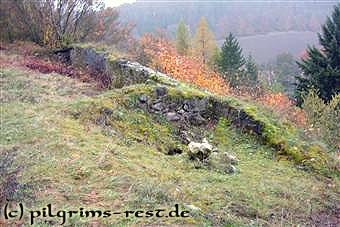
This is the interior, which is obviously cave-like:
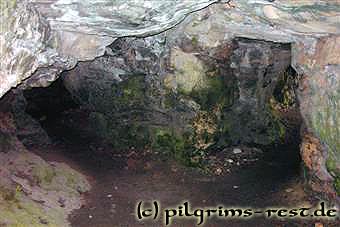
The Rohrbach castle below was a residence and large sprawling iron factory. A river runs next to it on which iron
products were transported to the Danube and on the Danube to Austria, Hungary, and Serbia and West to Baden.
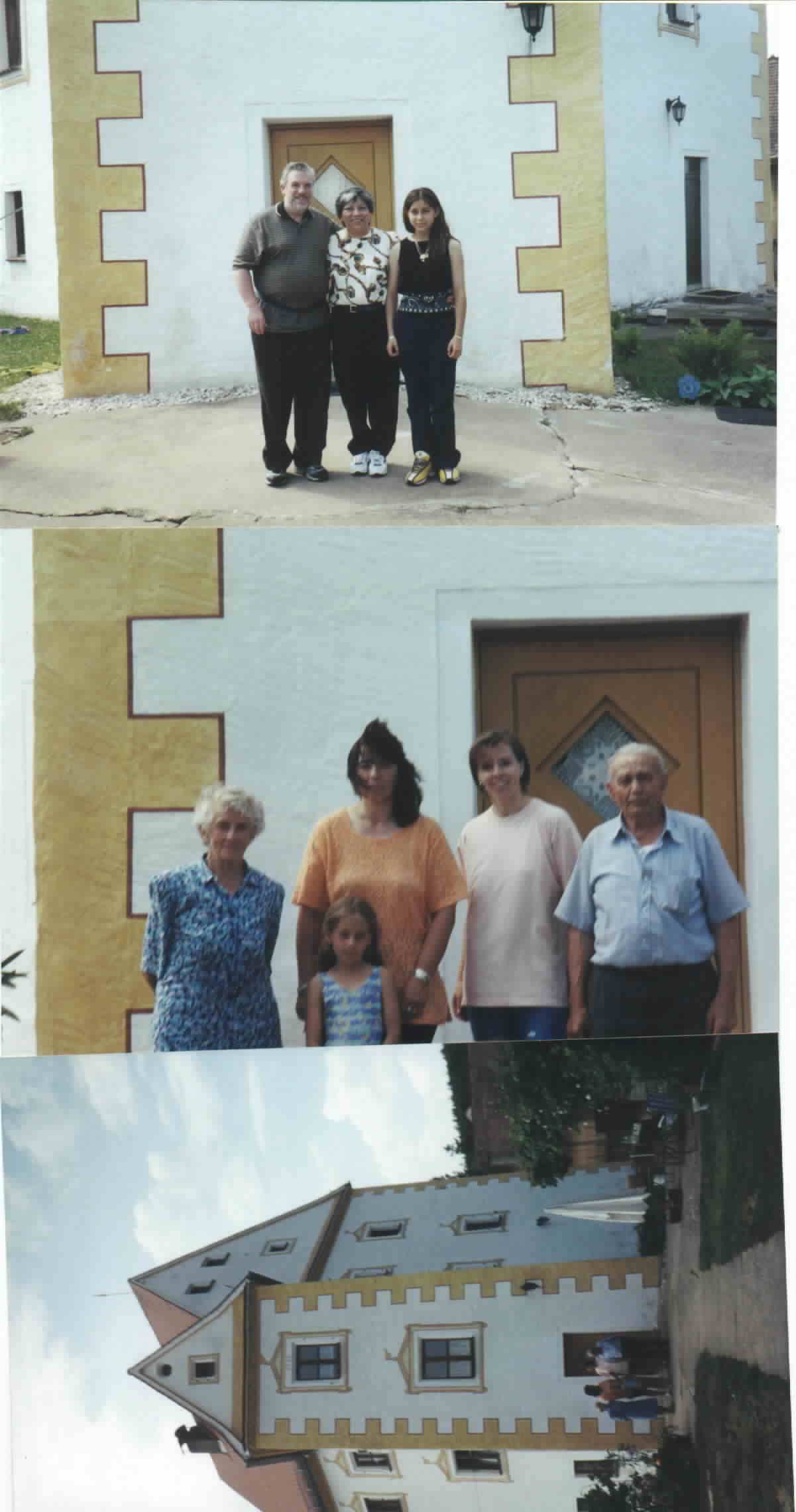
This is one of the castles that Familie Sauerzapf owned along the Iron Road. They owned and operated a number of foundries
and were members of the nobility. This area of the Upper Palatine suffered enormously during the Thirty Years War. Most
of the castles were burned. Some, like the one in Rohrbach, have been restored. Another Sauerzapf castle is in Rosenberg.
Today there are no Sauerzapfs living in this area. In a visit to most of the parish churches you can see the Sauerzapf coat
of arms above the center of the church or above the main altar. Other Sauerzapfs seem to have moved Southeast down the
Danube to the Vienna area or West to the Baden area of Germany.
One of the strangest stories about how I came to discover the Sauerzapf story began when I was a year old. A very
old lady pulled up in a Rolls Royce. She approached my mother and explained that she was from Germany and that she wanted
to inform us that she was the last Sauerzapf. She placed me on her knee, which frightened my mother. She said she was
extremely rich and was able to buy passage on a submarine, that was was bringing German spies to the US through New Orleans.
America was entering World War II. She said she wanted our family to know about her property and riches and that, after the
war, we should go to the Black Forest and claim our inheritance. My mom understood Black Forest , but what
she must have really said is Bavarian Forest.
The FBI pulled up almost immediately after she pulled away. They wanted to know what she wanted. My mother said
she just wanted to see the baby and talk about the family. The FBI told my mother that they had been following her and two
men. They remarked that she was easy to follow because she had one of only two Rolls Royces in Illinois. They speculated that
she made up a family story to get my dad to sabotage Crane Company, a foundry with defense contracts. My mother told them
that she didn't even ask about my dad or where he worked. After that, whenever we picked up the phone, a whirring sound could
be heard.
A couple of weeks later, the old lady stopped by again saying that she wanted to see me me again. She reminded my mother
about going to Germany to claim our inheritance. Then she said that she would not visit again. She kissed my cheek and left.
About a week later the FBI came again. They asked if my mother had seen the newspaper. The FBI had gone to the hotel where
they staying and during a gunfight the three nazis were shot dead.
Many years later I searched information about the Black Forest, the name Sauerzapf, and castles. I found nothing.
I read lots of literature and found the coat of arms but little else.
I put the name Sauerzapf on search engines in 1993 and to my surprise found about 100 listings. One was about the Rohrbach
castle. Then I found that the area is known as the Bavarian Forest. Then I discovered more castles and that no Sauerzapfs
now lived in that area.
I also learned why I had so much trouble researching the Sauerzapf castles, even though there is a plethora of information
and plenty of castles and coats of arms. This area of Germany was ignored because it was just a few miles from the Czech
border. The cold war isolated it. The area had suffered from the thirty years war, Napoleon's invasion, conflicts
between the empires of Berlin and Vienna, ethnic problems with the Czech people, the second world war, and the cold war. Today,
the Upper Palatine country is quiet, beautiful, historical, and becoming more of a interesting area to visit.
|
